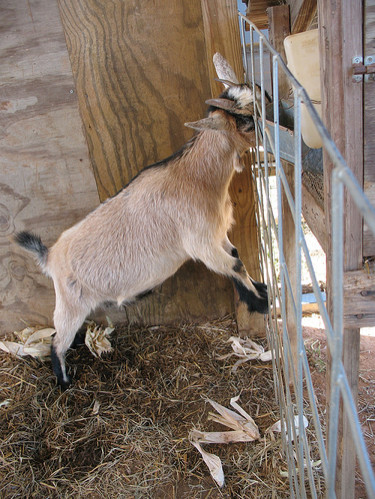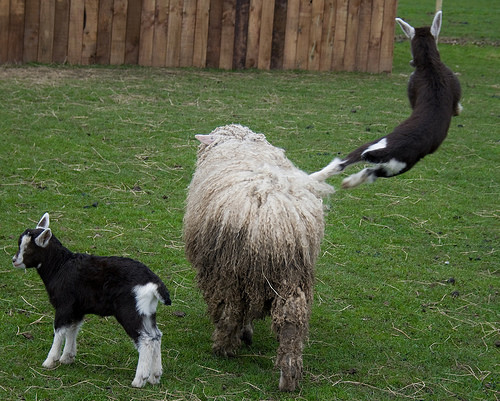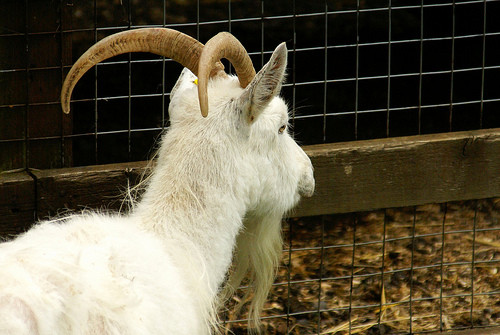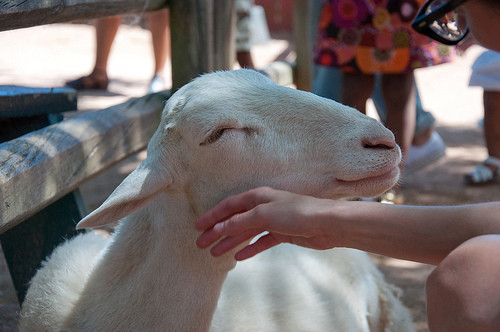Urban Goat Keeping: Things You Should Know Before You Get Your First Kid [PHOTOS]
Goats have many qualities to recommend them as pets. Unlike dogs, you can (probably) train them to use a litter box or pee pad! Unlike cats, you can milk them! Plus, once you get past the horizontal pupils -- an evolutionary adaptation that increases their depth perception -- they’re actually quite cute.
“Personality wise, goats are like a cross between a dog and a cat,” San Francisco urban goat keeper Heidi Kooy wrote at the website Backyard Ecosystem. “They love to be stroked, pet, scratched -- especially scratched, and can be trained to walk on a lead, carry packs, or pull carts.”

Space is the first big consideration for the would-be urban goatherd.
Generally, experts recommend about 15 square feet of indoor space and 200 square feet of outdoor space per goat. Pygmy goats require a bit less room. Obviously, a big backyard is essential.

A good stout fence is important -- at least five feet tall, and sunk into the ground. Be sure to go with something sturdy, as goats are notorious escape artists. There may also be local regulations that determine how close your goat can be to your home.

Keeping a single goat isn’t recommended, because they’re pretty social creatures.

A goat’s horns are handy in the wild, but, in a tight urban environment, they’re a liability. A goat can injure other goats, people, or animals. What’s more, goats have arteries that run through the bony part of the horn. A broken horn could mean a bloody death.
For the safety of both the goat and those around him or her, most goat owners remove the horns by a process called debudding -- one that could turn a lot of potential urban goat owners off the idea of adopting one. This usually takes place when a goat is very young, and involves pressing a very hot iron onto their heads to burn the horn bud off. The process is painful, and sometimes a goat owner may be able to find a veterinarian to do it with anesthesia.

If you’re looking to make goat cheese, be aware: Your goat will have to give birth first. (The urban goatherd will probably want to keep a lady goat, or doe, rather than a male, or buck, since the latter tends to be rather stinky.) Once she has kids, a doe can produce milk for about 10 months.
You’ll have to milk your goat at least once a day, sometimes twice a day for standard-size breeds. Once you’ve got plenty of goat milk on hand, pick your favorite goat-cheese recipe and go to town!
Goats represent somewhat more of a commitment and investment than do either bees or chickens, so it’s unlikely they’ll ever become as ubiquitous as rooftop vegetable gardens. But if you think you have the time, space, and energy, check out husbandry sites such as Fias Co Farm for more tips on becoming an urban goat keeper!

© Copyright IBTimes 2024. All rights reserved.





















